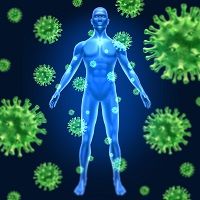Article
New Non-Latex Condom Enhances HIV Protection
Author(s):
Have you ever heard of a hydrogel condom? The answer is most likely ‘no’ since it’s a new material. But you may want to have it on your radar because it seems that it may better protect against the human immunodeficiency virus (HIV) and other sexually transmitted diseases (STDs).

Have you ever heard of a hydrogel condom? The answer is most likely ‘no’ since it’s a new material. But you may want to have it on your radar because it seems that it may better protect against the human immunodeficiency virus (HIV) and other sexually transmitted diseases (STDs).
Mahua Choudhury, PhD, and colleagues from the Texas A&M Health Science Center developed the innovative condom with hopes that it would not only better protect against HIV and STDs, but also be something that people would actually want to use.
“Some people are allergic to latex, and others are just not comfortable with it. Therefore, we wanted to create a novel material,” Choudhury, an assistant professor at the Texas A&M Health Science Center Irma Lerma Rangel College of Pharmacy, said in a news release.
- The MD Magazine HIV/AIDS condition center
This male condom is unlike most of the ones currently lining the shelves. Instead of latex, it’s made from a strong, elastic polymer called hydrogel, which is a gel that is made up mostly of water. The material is already used in other medical products, such as contact lenses.
So how does this condom protect against disease better? Well, the researchers explained that it will be enmeshed with a plant-based antioxidant which has proven to have anti-HIV properties. Therefore, it would create a barrier against the virus if it were to break.
“If there is an accident or something happens, this antioxidant will be released and prevent the replication of HIV,” Choudhury continued. “We are not only making a novel material for condoms to prevent the HIV infection, but we are also aiming to eradicate this infection if possible.”
In addition to preventing diseases and unwanted pregnancies, the hydrogel can increase sexual pleasure. One of the remaining questions, however, is if the antioxidant can release automatically or if pressure is needed. The team plans to test this within the next six months, and meanwhile, the condom is already in the patent process.
“If we succeed, it will revolutionize the HIV prevention initiative,” Choudhury concluded. “If you can make it really affordable, and really appealing, it could be a life-saving thing.”
What to Read Next >>> What We Learned About HIV in 2015





